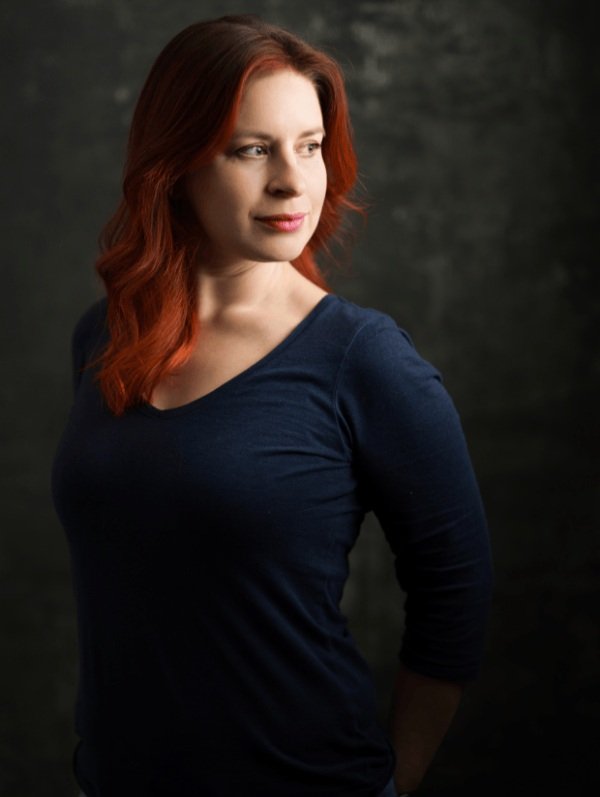Some Thoughts with ... Holly Race
31 Jul 2025The Author/s

Holly Race
Holly is a novelist and screenwriter. Her debut trilogy, the Midnight’s Twins series (Hot Key, 2020), reenvisions Arthurian legend within an urban fantasy setting. Her next trilogy, Six Wild Crowns (Orbit, 2025), is an historical fantasy retelling of the six wives of Henry VIII.
Prior to becoming a writer, Holly spent ten years as a script editor in film and television. She has worked for companies such as Red Planet Pictures, the Imaginarium Studios, Working Title Films and Aardman Animations and on series such as popular cosy crime drama Death in Paradise. She is currently a Royal Literary Fund fellow, attached to the Department of Earth Sciences at Cambridge University.
Holly lives in Cambridge with her husband and daughter. When she isn’t writing, she can usually be found renovating their crumbling Regency era townhouse.
The Interview
1.- Could you introduce yourself
to Jamreads’ readers?
Of course! Hi, I’m Holly, author
of Tudor-inspired fantasy Six Wild Crowns. I’ve been an author since
2020, when my debut YA trilogy Midnight’s Twins was published. Before
that I worked in television and film as a script editor, which means that I
came up with ideas, looked for books to adapt and worked with screenwriters to
make their scripts as compelling as possible. Some of the highlights of my career
involved working for British institution Aardman Animations, doing research for
the Mary Queen of Scots film, and working on the fourth series of cosy
crime show Death in Paradise. I live in Cambridge with my husband and
daughter in a gorgeous Bridgerton-era townhouse that’s crumbling at the edges,
and when I’m not writing or swimming in the River Cam, I can usually be found restoring
it.
2.- When did you decide to start
writing with publishing in mind?
I’ve written all my life – like
a lot of authors I started out writing fanfiction (when I was a child, Narnia
and His Dark Materials; when I was a teenager, Buffy and the
series that shall not be named). I played around with my own stories in my 20s,
but never seriously thought about turning it into a career because I absolutely
adored working with writers in my editorial role. In 2011 I had the seed
of an idea for an urban fantasy, and it took hold of me and kept growing.
In 2016, my husband encouraged me
to apply for the Faber Academy’s ‘Writing a Novel’ course. Taking that course
gave me the support I needed to take my own writing seriously. I was made
redundant towards the end of the course and shortly afterwards found out I was
pregnant, which I took as a sign that I should finish the book and query agents
– so I think that was probably the moment I started thinking that it might be
worth attempting to publish it! I was lucky enough to secure an agent pretty
quickly, and I ended up getting my first book deal in 2018, when my daughter
was two weeks old.
3.- Could you tell us about your
debut trilogy, Midnight’s Twin?
It’s very different from Six
Wild Crowns! Midnight’s Twins is a YA urban fantasy, set between
‘our’ world and the world we go to when we dream. It follows twins Fern and
Ollie as they are recruited into the ‘knights’, a secret army that protects
dreamers from deadly nightmares. It’s very loosely based on Arthurian legends
and was a reaction to my despair over Brexit and the increased nationalism and
‘personality politics’ that seemed to sweep the world around that time (and,
arguably, is still going strong today). The main villain is a politician who
has the power to manipulate people’s dreams and nightmares – because if you can
control people’s dreams, you can control their minds.
4.- How did the first idea for
Six Wild Crowns appear?
I’d just submitted the final
draft of the third book in the YA trilogy, and I sat down in a café and wrote a
list of all the subjects I adore. ‘The six wives of Henry VIII’ was at the top
of the list, and next to it I wrote ‘but make it fantasy’. I knew immediately
that there was something in that idea, and I knew the kind of themes I wanted
to explore – namely, the way in which our society pitches women against each
other. My original outline for the story was for a YA urban fantasy take on the
six wives. However, after feedback from my agent at the time, I landed on the
current way into the world: a high fantasy setting where Henry VIII is married
to all six queens at the same time in order to maintain a magical barrier that
protects his kingdom.
5.- Why did you choose the Tudor
as the main inspiration for the Queens of Elben series?
I’ve been fascinated by the
Tudors since I was a child, reading what can only be described as ‘Tudor smut’
found in my local library. Anne Boleyn was one of my first crushes – it was the
90s, when being a ‘pick me’ girl was considered ‘good’, and Anne Boleyn was the
ultimate pick me girl! I’m the kind of writer who needs to feel like my
characters are real and grounded and rich with nuance before I can really get
into a book, and the six queens – particularly Anne Boleyn, Catherine of Aragon
and Catherine Parr – were such a gift in that respect. They felt so real to me,
right from the start.
It was important to me that I
keep their ‘names’ (I use the term loosely, because in Six Wild Crowns
they are called by their surnames/ the names of their houses) rather than
changing them to something more fantastical. Some readers might find this
jarring, which I totally understand, but I wanted people to make direct
comparisons to the real women, to see how their stories diverge from reality
when they start to question societal norms.
6. Did the own book, Six Wild
Crowns, changed much from the first draft to the one we read?
The first line of the novel –
‘Her wedding dress is the colour of the massacre of Pilvreen’ – came to me
alongside that new pitch. I had no idea what the massacre of Pilvreen was, or
who was getting married, but the story blossomed from there and was the easiest
book I’ve ever written. Structurally, not a huge amount changed, but I did add
about 30,000 words between first and final drafts. Most of that went into
deepening the relationships and character arcs. I did most work to King Henry:
in the first draft he was a bit of a two-dimensional misogynist, but I like to
think that in the final novel he’s much more nuanced and is even (at times!)
sympathetic.
7.- SWC reached the Sunday Times
Best Seller list, how did you feel about it?
Relieved! My YA trilogy came out
in the pandemic and didn’t sell very well as a result, and I was quite jaded
about the publishing industry by the time Six Wild Crowns came out. Getting
onto the bestseller list is only partly to do with the quality of the book, and
a lot to do with how much the publisher and booksellers get behind it. My brilliant
publisher did everything right and I had two beautiful special editions from
Waterstones and Goldsboro, so to not get on the Sunday Times list would
have absolutely felt like a reflection on my writing! But I am extremely
grateful to everyone who made it happen – the readers, my editorial and
marketing and publicity teams, and the wonderful booksellers. My editor, Nadia,
broke the news in her speech at my launch party, and it was incredible to share
that moment with my peers, publisher, friends and family.
8.- You also took from Celtic
folklore and pagan traditions to create your world and its beliefs; could you
tell us a bit about the investigation process behind this book?
Celtic folklore has always been
an interest of mine. Given that the fictional kingdom of Elben in Six Wild
Crowns is based on 16th Century England, I wanted to borrow from
folklore from the British Isles for some of the religious elements of the
trilogy. Cernunnos, who is the dominant god in Elben, was a deity who in Celtic
religions was traditionally associated with the underworld, wild animals, and
fertility. In my book he is more aligned with stereotypically male gender
stereotypes; fertility, yes, but also strength and dominance.
16th Century Europe
was rife with religious turmoil, including Henry VIII’s break with Rome. I
wanted to play with that in Six Wild Crowns, along with echoing the ways
in which religions evolve and battle for control over territories (paganism to
Christianity; Catholicism to Protestantism). I won’t say more for fear of
giving spoilers!
9.- If you have to choose one of
your characters that stayed with you, who would you choose and why?
This comes as a surprise even to
me, but – Seymour! She’s the second POV character in Six Wild Crowns
next to Boleyn. The two are opposites: Boleyn is outgoing, vivacious and knows
exactly how smart she is. Seymour is introverted and has been beaten by her
horrible family into believing that she’s stupid. However, she’s got a backbone
of steel and once she learns to trust her instincts, she comes to realise that
she can manipulate with the best of them. She really wormed her way into my
heart and I loved seeing her come into her own during the course of the plot.
10.- What can we expect from
Holly Race in the future?
I recently submitted structural edits on
the second book in the series, and have been drafting the third. There are
three new POV characters in the sequel: Howard, Cleves, and a secret third
character, who have all been such fun to write in their different ways. The
sapphic longing from the first book turns to sapphic spice, the stakes are even
higher, and there’s the most gorgeously brave little lapdragon who I hope will
steal readers’ hearts!
